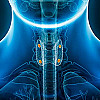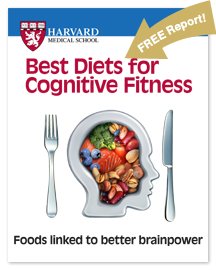The adolescent brain: Beyond raging hormones
Originally published in the Harvard Mental Health Letter, July 2005
In every generation, it seems, the same lament goes forth from the parents of adolescents: "What's the matter with kids today?" Why are they so often confused, annoying, demanding, moody, defiant, reckless? Accidental deaths, homicides, and binge drinking spike in the teenage years. It's the time of life when psychosis, eating disorders, and addictions are most likely to take hold. Surveys show that everyday unhappiness also reaches its peak in late adolescence.
Plenty of explanations for teenage turmoil are available. Adolescents need to assert their independence and explore their limits, taking risks, breaking rules, and rebelling against their parents while still relying on them for support and protection. ("What's the matter with the older generation?") They have to cope with disconcerting new sexual impulses and romantic feelings. Cultural change heightens incompatibility between the generations. Now scientific research is suggesting a new reason for the clashes between teenagers and their environment. Unsettled moods and unsettling behavior may be rooted in uneven brain development.
It's not a question of intellectual maturity. Most studies show that abstract reasoning, memory, and the formal capacity for planning are fully developed by age 15 or 16. If teenagers are asked hypothetical questions about risk and reward, they usually give the same answers as adults. But the emotional state in which they answer questionnaires is not necessarily the one in which they make important choices. In real life, adolescents, compared to adults, find it more difficult to interrupt an action under way (stop speeding); to think before acting (learn how deep the water is before you dive); and even to choose between safer and riskier alternatives. It is easy for them to say that they would not get into a car with a drunk driver, but more difficult to turn down the invitation in practice. Adolescents' judgment can be overwhelmed by the urge for new experiences, thrill-seeking, and sexual and aggressive impulses. They sometimes seem driven to seek experiences that produce strong feelings and sensations.
Resisting social pressure is also more difficult for teenagers. Much of their troubling behavior, from gang violence to reckless driving and drinking, occurs in groups and because of group pressure. In a psychological experiment, adolescents and adults took a driving simulation test that allowed them to win a reward by running a yellow light and stopping before they hit a wall. Adolescents, but not adults, were more likely to take extra chances when friends were watching.
Another revealing psychological experiment is the Iowa gambling task. Subjects can choose from one of two decks of cards in the hope of picking a card that provides a reward. The "good" deck contains many cards that provide some reward; the "bad" one, many cards that provide nothing and insufficient compensation in the form of a few that hold a jackpot. The choices of adults correspond fairly well to their tested reasoning capacity. In adolescence, the correlation is much weaker.
Evidence is appearing that these differences have a definite basis in brain structure and functioning. Recent research has shown that human brain circuitry is not mature until the early 20s (some would add, "if ever"). Among the last connections to be fully established are the links between the prefrontal cortex, seat of judgment and problem-solving, and the emotional centers in the limbic system, especially the amygdala. These links are critical for emotional learning and high-level self-regulation.
Beginning at puberty, the brain is reshaped. Neurons (gray matter) and synapses (junctions between neurons) proliferate in the cerebral cortex and are then gradually pruned throughout adolescence. Eventually, more than 40% of all synapses are eliminated, largely in the frontal lobes. Meanwhile, the white insulating coat of myelin on the axons that carry signals between nerve cells continues to accumulate, gradually improving the precision and efficiency of neuronal communication — a process not completed until the early 20s. The corpus callosum, which connects the right and left hemispheres of the brain, consists mostly of this white matter.
Another circuit still under construction in adolescence links the prefrontal cortex to the midbrain reward system, where addictive drugs and romantic love exert their powers. Most addictions get their start in adolescence, and there is evidence that adolescent and adult brains respond differently to drugs. In both human beings and laboratory rats, studies have found that adolescents become addicted to nicotine faster and at lower doses. Functional brain scans also suggest that teenagers and adults process reward stimuli differently; the adolescents are hypersensitive to the value of novel experiences.
Hormonal changes are at work, too. The adolescent brain pours out adrenal stress hormones, sex hormones, and growth hormone, which in turn influence brain development. The production of testosterone increases 10 times in adolescent boys. Sex hormones act in the limbic system and in the raphe nucleus, source of the neurotransmitter serotonin, which is important for the regulation of arousal and mood. The hormonally regulated 24-hour clocks change their settings during adolescence, keeping high school and college students awake far into the night and making it difficult to rise for morning classes.
As long as the brain is still in formation, things can go wrong in many ways, and some of them involve the onset of psychiatric disorders. Stress can retard the growth of the hippocampus, which consolidates memories. According to some theories, the pruning of gray matter or the thickening of the myelin coat in late adolescence allows the early symptoms of schizophrenia to emerge.
At least one important social policy conclusion may have been drawn in part from the neuroscience research on the adolescent brain. In 2005, the Supreme Court, affirming a Missouri high court decision, declared by a vote of 5–4 that the execution of 16- and 17-year-olds is unconstitutionally cruel and unusual punishment. The minimum age for capital punishment is now the same as the minimum age for voting and serving on juries. In writing their decision, the justices referred to evolving standards of decency, practices in other countries, the immaturity of adolescents, and their greater potential for change. They did not specifically mention brain research, but they had the opportunity to read friend-of-the-court briefs citing this research that were submitted by the American Bar Association, American Academy of Child and Adolescent Psychiatry, and American Psychiatric Association, among others.
Some critics, even if they welcome the Supreme Court decision for other reasons, have complained that this research stereotypes adolescents and provides a biological rationalization for irresponsible behavior. Animal experiments have limited value because laboratory animals do not undergo a lengthy human childhood. And human brain development does not unfold automatically and uniformly. There is much individual variation that reflects experience as well as genetic programming. The problems of teenagers are not all in their brains but have many causes, social and individual, genetic and environmental. At present and probably for a long time, researchers will be getting better information on the mental and emotional development of adolescents from interviews, observations, and behavioral tests than from brain scans.
But neuroscience research is becoming more sophisticated. There are already long-term studies in which people undergo frequent periodic brain scans over the course of their lives. The results are being used to investigate the effects of behavioral and cognitive therapies on attention deficit disorder and reading deficiencies in adolescents. Scientists are also looking at typical adolescent brain development to provide clues to the ways in which things go wrong. Some day, this research may provide results that will influence treatments for psychiatric disorders and other problems in adolescence.
References
Arnsten AFT, et al. "Adolescence: Vulnerable Period For Stress-Induced Prefrontal Cortical Function?" Annals of the New York Academy of Sciences (June 2004): Vol. 1021, pp. 143-47.
Casey BJ, et al. "Imaging the Developing Brain: What Have We Learned about Cognitive Development?" Trends in Cognitive Sciences (March 2005): Vol. 9, No. 3, pp. 104-10.
Giedd JN. "Structural Magnetic Resonance Imaging of the Adolescent Brain," Annals of the New York Academy of Sciences (June 2004): Vol. 1021, pp. 77-85.
Kelley AE, et al. "Risk Taking and Novelty Seeking in Adolescence," Annals of the New York Academy of Sciences (June 2004): Vol. 1021, pp. 27-32.
Masten AM. " Regulatory Processes, Risks, and Resilience in Adolescent Development," Annals of the New York Academy of Sciences (June 2004): Vol. 1021, pp. 310-19.
Rosso IM, et al. "Cognitive and Emotional Components of Frontal Lobe Functioning in Childhood and Adolescence," Annals of the New York Academy of Sciences (June 2004): Vol. 1021, pp. 355-62.
Sisk CL, et al. "The Neural Basis of Puberty and Adolescence," Nature Neuroscience (October 2004): Vol. 7, No. 10, pp. 1040-47.
Spessot AL, et al. "Neuroimaging of Developmental Psychopathologies: The Importance of Self-Regulatory and Neural Plastic Processes in Adolescence," Annals of the New York Academy of Sciences (June 2004): Vol. 1021, pp. 86-104.
Steinberg L. "Cognitive and Affective Development in Adolescence," Trends in Cognitive Science (February 2005): Vol. 9, No. 2, pp. 68-75.
Steinberg L. "Risk-Taking in Adolescence: What Changes, and Why?" Annals of the New York Academy of Sciences (June 2004): Vol. 1021, pp. 51-58.
Disclaimer:
As a service to our readers, Harvard Health Publishing provides access to our library of archived content. Please note the date of last review or update on all articles.
No content on this site, regardless of date, should ever be used as a substitute for direct medical advice from your doctor or other qualified clinician.















